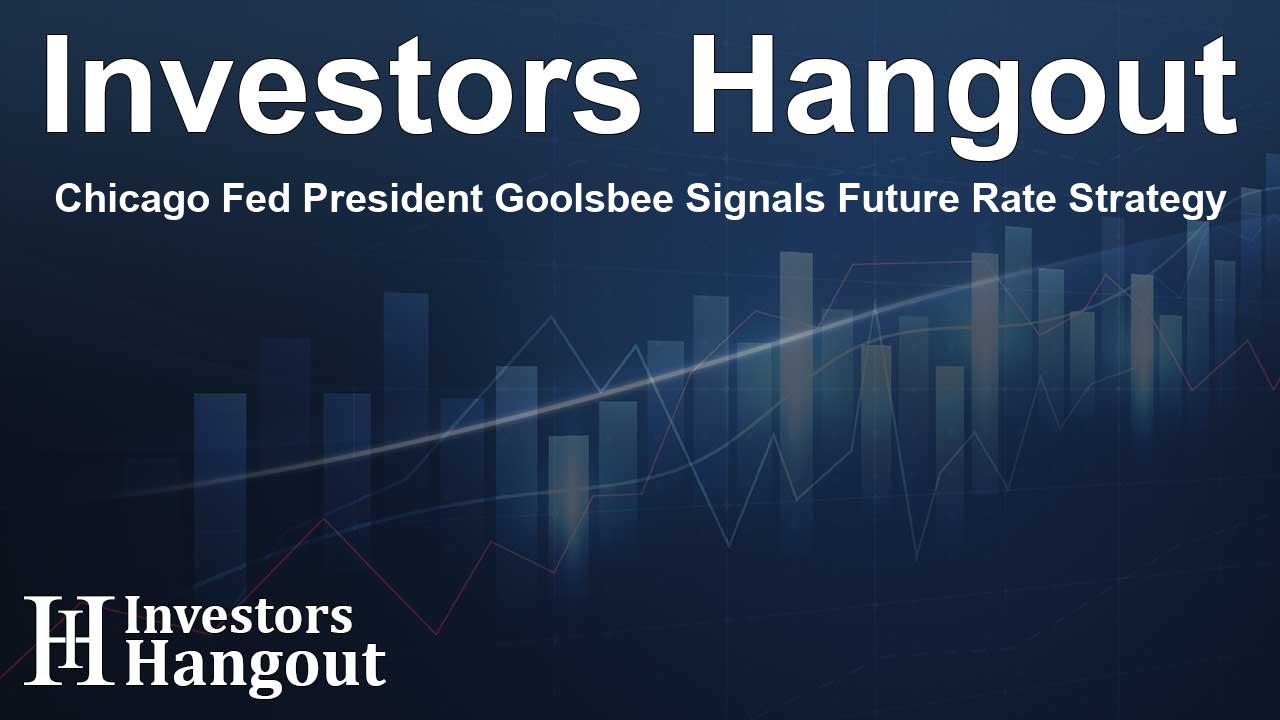Chicago Fed President Goolsbee Signals Future Rate Strategy

Chicago Fed President Goolsbee Discusses Rate Cuts
Chicago Federal Reserve President Austan Goolsbee shared insights about the future direction of interest rates, emphasizing the expectation of lower rates ahead. However, he also expressed caution regarding the speed at which these cuts may occur, highlighting the existing uncertainty surrounding the ultimate destination of the rate-cutting cycle.
Expectations for Future Rates
During a recent event, Goolsbee elaborated on his outlook, stating, "If we look out over the next year or so, it feels to me like rates will end up a fair bit lower than where they are today." This assertion reflects a broader sentiment within the Fed, suggesting a shift towards potentially more accommodative monetary policy.
Uncertainties in Rate Reduction
Goolsbee acknowledged the complexities involved in navigating the path toward a neutral rate, particularly amid ongoing debates about where rates will eventually stabilize. Despite these discussions, he remains optimistic that rates will trend lower in the foreseeable future.
Recent Fed Actions and Expectations
Recently, the Fed reduced rates to a target range of 4.5% to 4.75%. Analysts largely anticipate another rate cut of 25 basis points in the upcoming December meeting, which would signify the Fed’s continued commitment to adjusting monetary policy in response to evolving economic conditions.
Long-Term Economic View
In addition to discussing interest rates, Goolsbee stressed the importance of taking a longer view of the economy, particularly considering recent inflation pressures and the strength of the labor market. He noted, "My view is that the long arc over the last year and a half shows inflation is way down and on its way to 2 percent. Labor markets have cooled to something close to stable full employment." This provides a more stable backdrop for considering monetary policy adjustments.
Achieving Dual Mandate Goals
As the Fed approaches its dual mandate targets of achieving 2% inflation and maximizing employment, Goolsbee believes it will be essential for the central bank to realign rates to reflect where they could ultimately settle. This calculated approach aims to maintain economic stability while ensuring that the Fed remains responsive to changing conditions.
Frequently Asked Questions
What did Goolsbee say about future interest rates?
Goolsbee indicated that he expects rates to decrease over the next year, although the pace of cuts may slow down.
What is the current rate set by the Fed?
The Fed has recently cut rates to a range of 4.5% to 4.75% and expects further adjustments in December.
What are the Fed's dual mandate goals?
The Fed aims to achieve a stable inflation rate of 2% and maximum employment as part of its dual mandate.
Why is there uncertainty about rate cuts?
There is ongoing debate regarding the ultimate endpoint of the rate-cutting cycle, which creates uncertainty.
What has been the trend in inflation and labor markets?
Goolsbee stated that inflation has been declining and labor markets have stabilized, which supports the possibility of lower rates.
About Investors Hangout
Investors Hangout is a leading online stock forum for financial discussion and learning, offering a wide range of free tools and resources. It draws in traders of all levels, who exchange market knowledge, investigate trading tactics, and keep an eye on industry developments in real time. Featuring financial articles, stock message boards, quotes, charts, company profiles, and live news updates. Through cooperative learning and a wealth of informational resources, it helps users from novices creating their first portfolios to experts honing their techniques. Join Investors Hangout today: https://investorshangout.com/
Disclaimer: The content of this article is solely for general informational purposes only; it does not represent legal, financial, or investment advice. Investors Hangout does not offer financial advice; the author is not a licensed financial advisor. Consult a qualified advisor before making any financial or investment decisions based on this article. The author's interpretation of publicly available data shapes the opinions presented here; as a result, they should not be taken as advice to purchase, sell, or hold any securities mentioned or any other investments. The author does not guarantee the accuracy, completeness, or timeliness of any material, providing it "as is." Information and market conditions may change; past performance is not indicative of future outcomes. If any of the material offered here is inaccurate, please contact us for corrections.